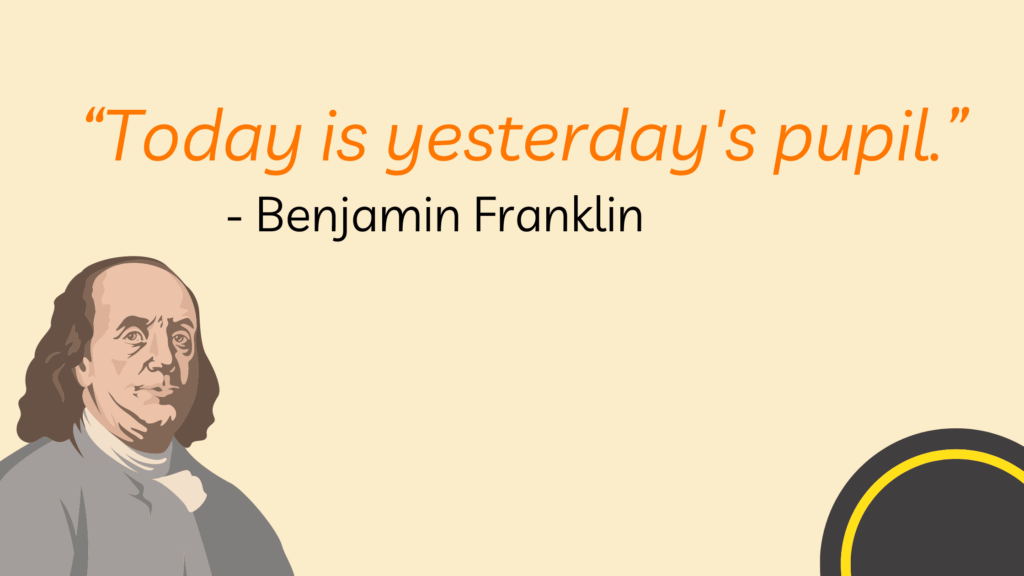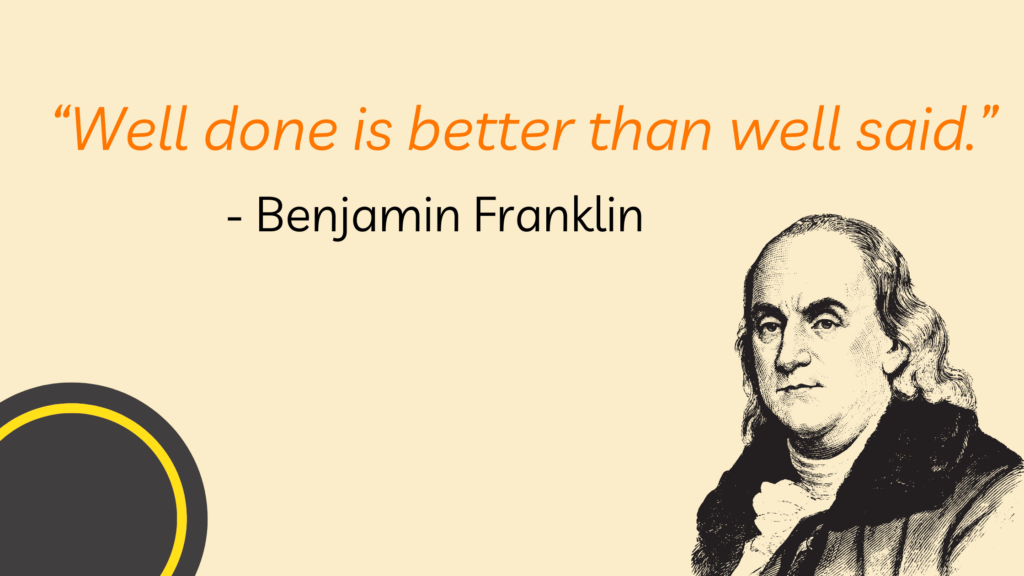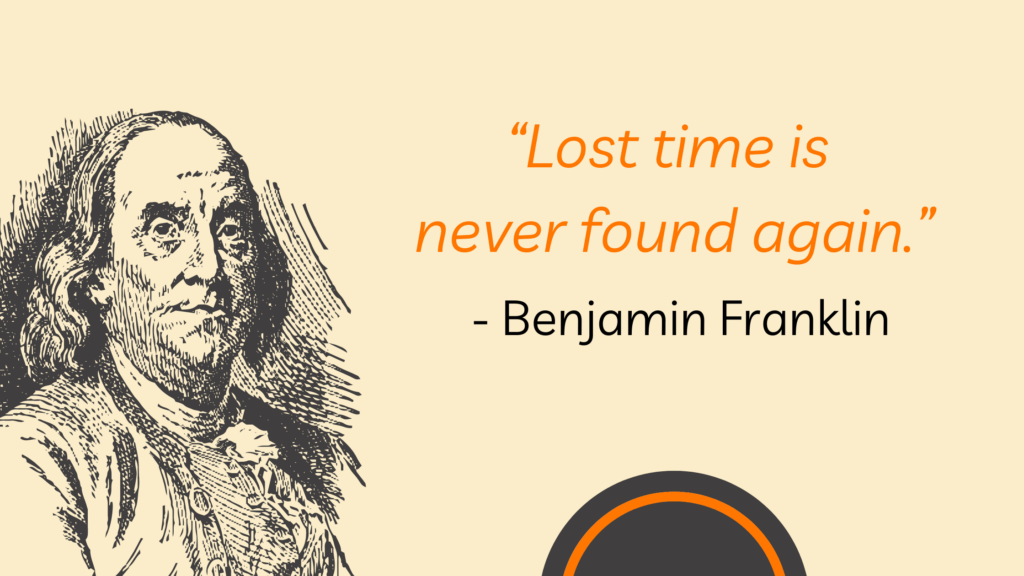Content Marketing Lessons From Benjamin Franklin
How to attract readers and keep them engaged
Twenty-five years before the American Revolution, a Philadelphia-based printer rose to prominence and prosperity by publishing content that both entertained and captured the attention of the nation. And in doing so, left some important content marketing lessons for today’s brand owners.
Benjamin Franklin published the annual “Poor Richard’s Almanack” from 1732 to 1758. It contained all the staples of an almanac: a calendar, weather reports, poems, astrological information, puzzles and more — but it was the wordplay and clever proverbs that made it popular. In fact, versions of many of the phrases coined in the publication still live on today.
Colonists snatched up about 10,000 copies each year, a huge number for the time, and Franklin became a respected (and wealthy) printer — among his many other accomplishments, of course.
Biographer Walter Isaacson calls Franklin, “the country’s first unabashed public relations expert.” And Franklin certainly did have a clear understanding of what many of today’s brands would consider top priorities, like how to use publications to move closer to customers.
Brands have a wealth of content to share. And readers want content that will help them improve their businesses or better their lives. But as Franklin understood, content succeeds when it’s focused on what the reader wants — not on what a brand is selling.
That’s why content marketing is all about brands building better relationships with their readers and providing value before selling anything.
Franklin managed to establish a deep relationship with his audience despite a labor-intensive printing process and a difficult distribution channel. Imagine what he might have accomplished with an internet connection and modern personalization capabilities!
“Poor Richard’s Almanack” is home to some of Franklin’s most famous quotes. As more of today’s brands work to leverage content marketing, and thus become content publishers in their own rights, what might be learned from these sayings and the popularity of his pamphlets?
Bonus content: Top Quotes for Achieving Success and Reaching Your Goals.
“Today is yesterday’s pupil.”

The idea of marketing to a customer base through periodical publications like pamphlets and magazines is hundreds of years old.
After Franklin did it, so did John Deere with his publication, “The Furrow,” launched in the late 1800s. Michelin then did it with its guides for drivers starting in 1900. Weight Watchers continued the trend with its newsstand magazine in the 1960s, and many other brands followed suit.
Marketers and brand owners today can learn from these examples, but they can (and must) go further, continually adapting to what readers want. While the rise of the internet has changed everything for content marketers, the reality is that the web is continuing to evolve. Running a blog and offering up PDFs is no longer enough.
Today’s readers want visually compelling, media-rich, engaging content that they can consume quickly and share easily. It all needs to be responsive, accessible and entertaining. With Flash dead, HTML5 publications are the future.
These cutting-edge digital publications enable personalization and interaction far more than their paper predecessors — or even more recent technologies like PDF and epub — ever could, and they are even easier to produce.
Digital content marketing assets, like those created with Foleon allow marketers and brand owners to do things like:
Segment audiences, and serve the right readers content that is most likely to interest them. With today’s technology, digital publications can show readers only pages specifically tailored to their interests.
Personalize content based on existing data in a CRM or by pulling in data from LinkedIn. A reader’s name, industry and job title can be used to customize their reading experience.
Analyze readers, and see how long they spend reading specific articles or sections, what links they click on and where they exit. These insights can then be used to optimize a publication and determine what content or message to send next.
“Well done is better than well said.”

In Franklin’s day, brands had to rely solely on words and handmade illustrations to connect with would-be customers. At the time, it was sufficient. But words are no longer adequate in a world where audiences expect to be continually wowed with stunning visuals.
Of course, with today’s digital publications, brand owners and content publishers can use stunning imagery; but they can also now incorporate video, animations, personalization, and an interactive user experience to convey their message far more effectively than with static text and pictures.
Using content that is both media-rich and interactive keeps readers engaged and makes digital sales and marketing collateral more valuable. Features like user-friendly navigation, videos, quizzes, games, feedback forms, and social sharing are all possible — and they make content far more immersive.
“Lost time is never found again.”

Printers like Franklin apprenticed for years to learn their trade. Learning how to create digital marketing publications, however, is far easier and it takes a lot less time to publish them. That means marketers can spend their time on other priorities.
Tools like Foleon make it easy for marketers and brand owners to create beautiful, interactive publications that render flawlessly on any platform, including mobile devices, without any help from developers or designers. With no technical expertise needed, marketers need only gather the content.
Templated design options, form builders, automatic issue management, and other features make it easy for brands to capture all the benefits of digital sales and marketing publications — whether they be intended as magazines, brochures, product catalogs, ebooks, white papers, proposals, or anything else.
Modern content marketing tools help to save time and costs. They allow brands to publish content faster, at a higher frequency, and reach more people than ever before. Had Franklin had access to such technology, his almanac might have been a monthly publication instead of an annual one.
Conclusion
Benjamin Franklin had a clear understanding of how to attract readers and keep them engaged with his content. As today’s marketers think about content marketing strategies for their brands, they’d be wise to follow in his footprints — or rather, stand on his shoulders. Franklin’s wisdom mixed with today’s technologies is a formula for strong content that will foster more awareness, new leads, and more engaged audiences.
You might also like:
Author bio
 Ritesh is a digital marketing manager with years of experience in driving growth. He’s currently the director of inbound marketing at Foleon. You can find more about him on his LinkedIn profile.
Ritesh is a digital marketing manager with years of experience in driving growth. He’s currently the director of inbound marketing at Foleon. You can find more about him on his LinkedIn profile.
Master the Art of Video Marketing
AI-Powered Tools to Ideate, Optimize, and Amplify!
- Spark Creativity: Unleash the most effective video ideas, scripts, and engaging hooks with our AI Generators.
- Optimize Instantly: Elevate your YouTube presence by optimizing video Titles, Descriptions, and Tags in seconds.
- Amplify Your Reach: Effortlessly craft social media, email, and ad copy to maximize your video’s impact.